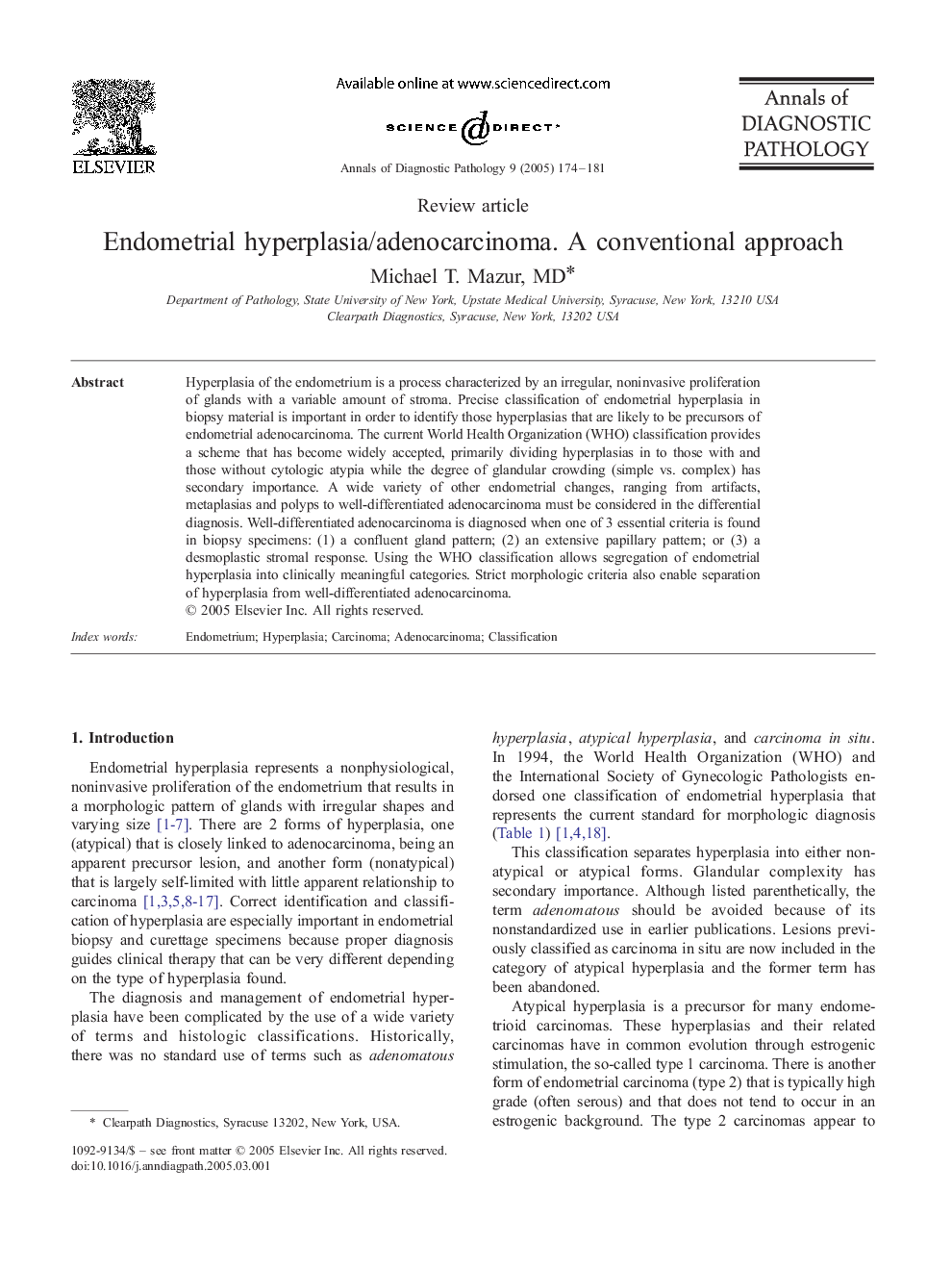| Article ID | Journal | Published Year | Pages | File Type |
|---|---|---|---|---|
| 10090586 | Annals of Diagnostic Pathology | 2005 | 8 Pages |
Abstract
Hyperplasia of the endometrium is a process characterized by an irregular, noninvasive proliferation of glands with a variable amount of stroma. Precise classification of endometrial hyperplasia in biopsy material is important in order to identify those hyperplasias that are likely to be precursors of endometrial adenocarcinoma. The current World Health Organization (WHO) classification provides a scheme that has become widely accepted, primarily dividing hyperplasias in to those with and those without cytologic atypia while the degree of glandular crowding (simple vs. complex) has secondary importance. A wide variety of other endometrial changes, ranging from artifacts, metaplasias and polyps to well-differentiated adenocarcinoma must be considered in the differential diagnosis. Well-differentiated adenocarcinoma is diagnosed when one of 3 essential criteria is found in biopsy specimens: (1) a confluent gland pattern; (2) an extensive papillary pattern; or (3) a desmoplastic stromal response. Using the WHO classification allows segregation of endometrial hyperplasia into clinically meaningful categories. Strict morphologic criteria also enable separation of hyperplasia from well-differentiated adenocarcinoma.
Related Topics
Health Sciences
Medicine and Dentistry
Pathology and Medical Technology
Authors
Michael T. MD,
